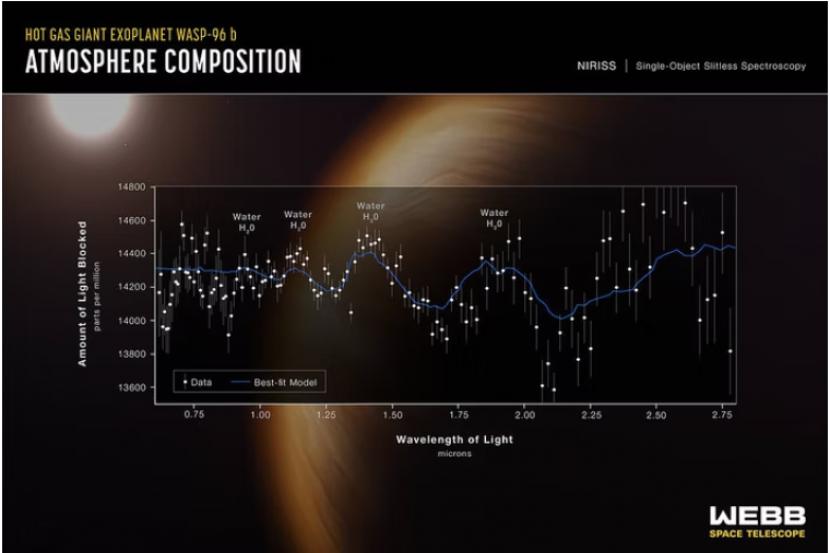Previous observations say this planet has a clear sky, no clouds.
REPUBLIKA.CO.ID, JAKARTA — The performance and results of science photographs from the James Webb Space Telescope (JWST or Webb) have exceeded expectations. The telescope was able to reveal signs of clouds on an exoplanet previously believed to have a crystal clear sky.
NASA published the transmission spectrum for the exoplanet WASP-96b, which is about 1,150 light-years from Earth as part of the first batch of science data from the James Webb Space Telescope.
WASP-96b is an exoplanet known as “hot Jupiter”, a gas giant that revolves very close to its star. WASP stands for “Wide Angle Search for Planets,” which has so far found nearly 200 exoplanets using a robotic camera array in the Canary Islands and South Africa.
When a planet transits, or appears to move in front of its star from our perspective, the transmission spectrum shows the molecules in the planet’s atmosphere. Certain wavelengths of starlight are absorbed by molecules in the planet’s atmosphere as they pass through, preventing those wavelengths from reaching us.
As a result, the spectrum develops dark absorption lines that serve as a form of molecular fingerprint for the environment. The spectrum is reversed in the first set of Webb photos so it’s easier to see where most of the light has been blocked.
Webb’s observations in red and infrared light revealed signs of clouds and cloudy skies in addition to signs of water absorption in WASP-96b’s atmosphere. Some of the molecular spectral signatures radiating under the cloud can be hidden by the cloud.
However, in 2018, using only visual light, the Very Large Telescope in Chile found traces of sodium so intense in the atmosphere that scientists came to the conclusion that WASP-96b have no clouds at all. Recent observations made with the Magellan Baade telescope at the Las Campanas Observatory in Chile have now confirmed this discovery.
Astronomers reanalyzed Webb’s observations and previous optical observations to better understand WASP-96b’s atmospheric behavior and the relationship between its molecular composition and cloud levels. As it turned out, there were contradictory results that became a surprising puzzle for scientists.
WASP-96b may or may not have clouds, but one thing is absolutely certain: there is no life as we know it on that planet. WASP-96b is a bloated gas giant that orbits its star so closely that it completes one orbit in just 3.4 Earth days when heated to nearly 1,000 degrees Celsius.
WASP-96b is 1.2 times Jupiter’s in diameter although it only has half the mass due to the heat that causes the planet’s atmosphere to expand. The results highlight Webb’s incredible power and sensitivity.
Although the Hubble Space Telescope discovered water on an exoplanet in 2013, earlier detections required more observations. This is not the first identification of water in an exoplanet’s atmosphere.
In contrast, on June 21, the Webb Slitless Spectrograph and Near-Infrared Imager were able to identify the water absorption line in just one 6.4-hour observation. As you might have anticipated from Webb, the resulting transmission spectrum is the most precise ever obtained from an exoplanet.


